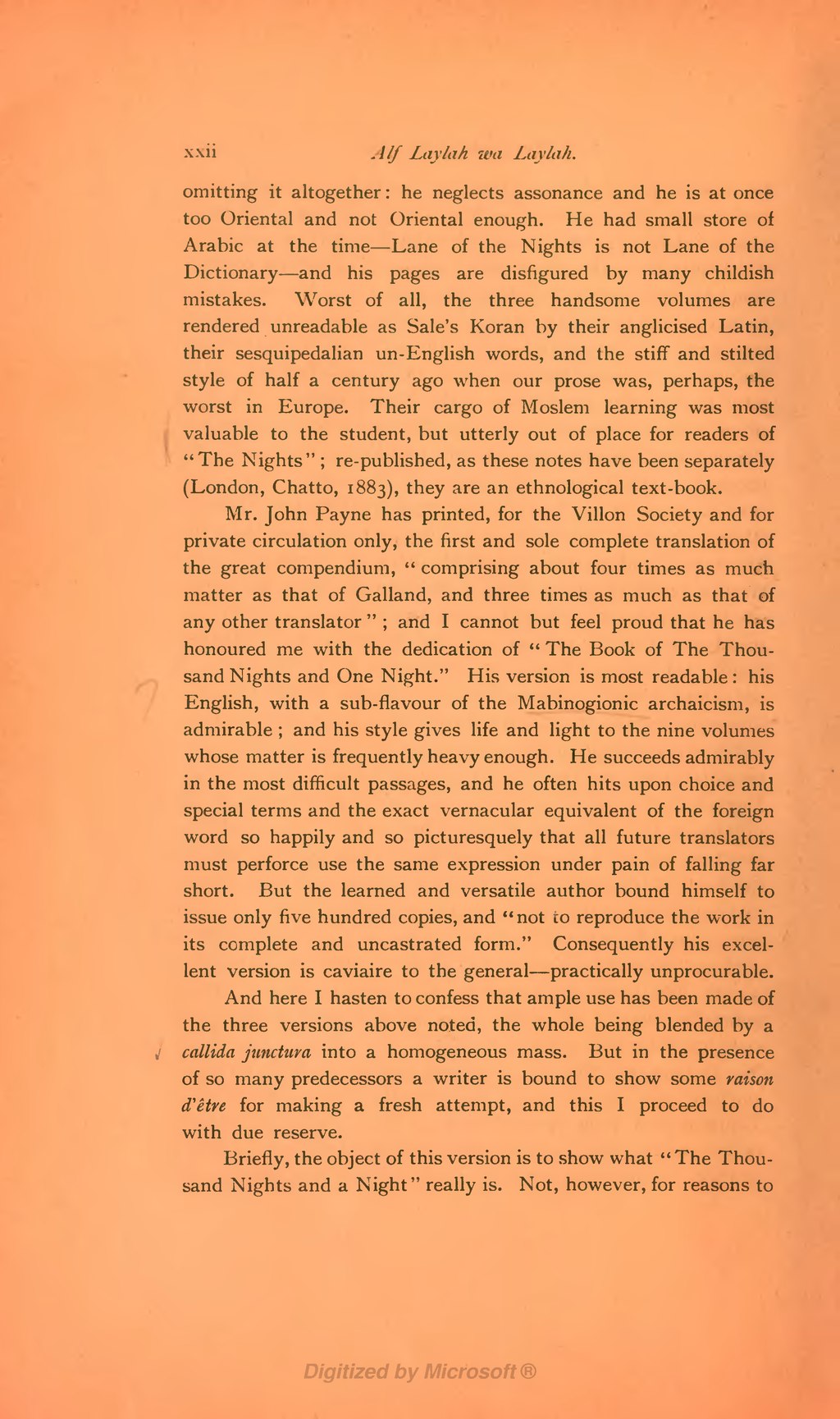omitting it altogether: he neglects assonance and he is at once too Oriental and not Oriental enough. He had small store of Arabic at the time—Lane of the Nights is not Lane of the Dictionary—and his pages are disfigured by many childish mistakes. Worst of all, the three handsome volumes are rendered unreadable as Sale's Koran by their anglicised Latin, their sesquipedalian un-English words, and the stiff and stilted style of half a century ago when our prose was, perhaps, the worst in Europe. Their cargo of Moslem learning was most valuable to the student, but utterly out of place for readers of "The Nights"; re-published, as these notes have been separately (London, Chatto, 1883), they are an ethnological text-book.
Mr. John Payne has printed, for the Villon Society and for private circulation only, the first and sole complete translation of the great compendium, "comprising about four times as much matter as that of Galland, and three times as much as that of any other translator"; and I cannot but feel proud that he has honoured me with the dedication of "The Book of The Thousand Nights and One Night." His version is most readable: his English, with a sub-flavour of the Mabinogionic archaicism, is admirable; and his style gives life and light to the nine volumes whose matter is frequently heavy enough. He succeeds admirably in the most difficult passages, and he often hits upon choice and special terms and the exact vernacular equivalent of the foreign word so happily and so picturesquely that all future translators must perforce use the same expression under pain of falling far short. But the learned and versatile author bound himself to issue only five hundred copies, and "not to reproduce the work in its complete and uncastrated form." Consequently his excellent version is caviaire to the general—practically unprocurable.
And here I hasten to confess that ample use has been made of the three versions above noted, the whole being blended by a callida junctura into a homogeneous mass. But in the presence of so many predecessors a writer is bound to show some raison d'être for making a fresh attempt, and this I proceed to do with due reserve.
Briefly, the object of this version is to show what "The Thousand Nights and a Night" really is. Not, however, for reasons to
